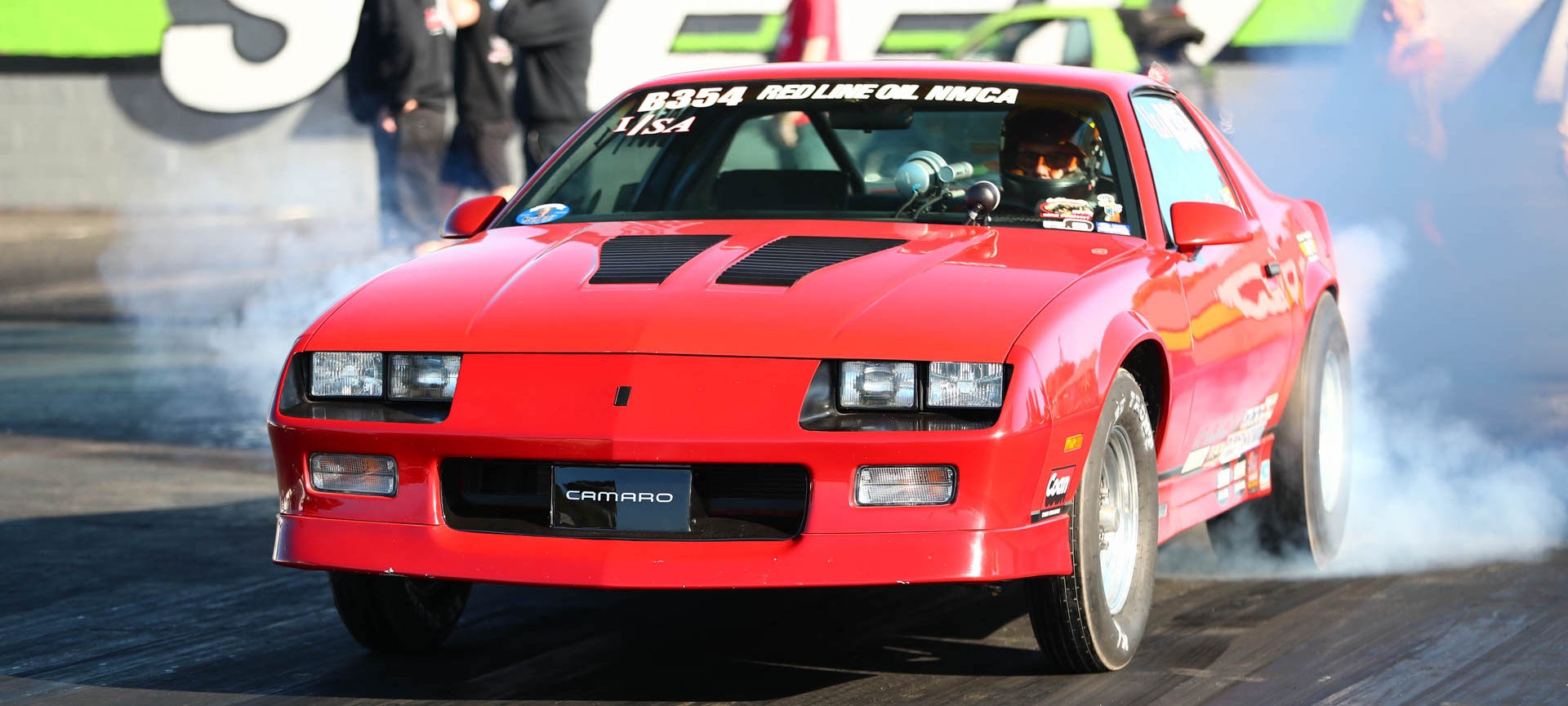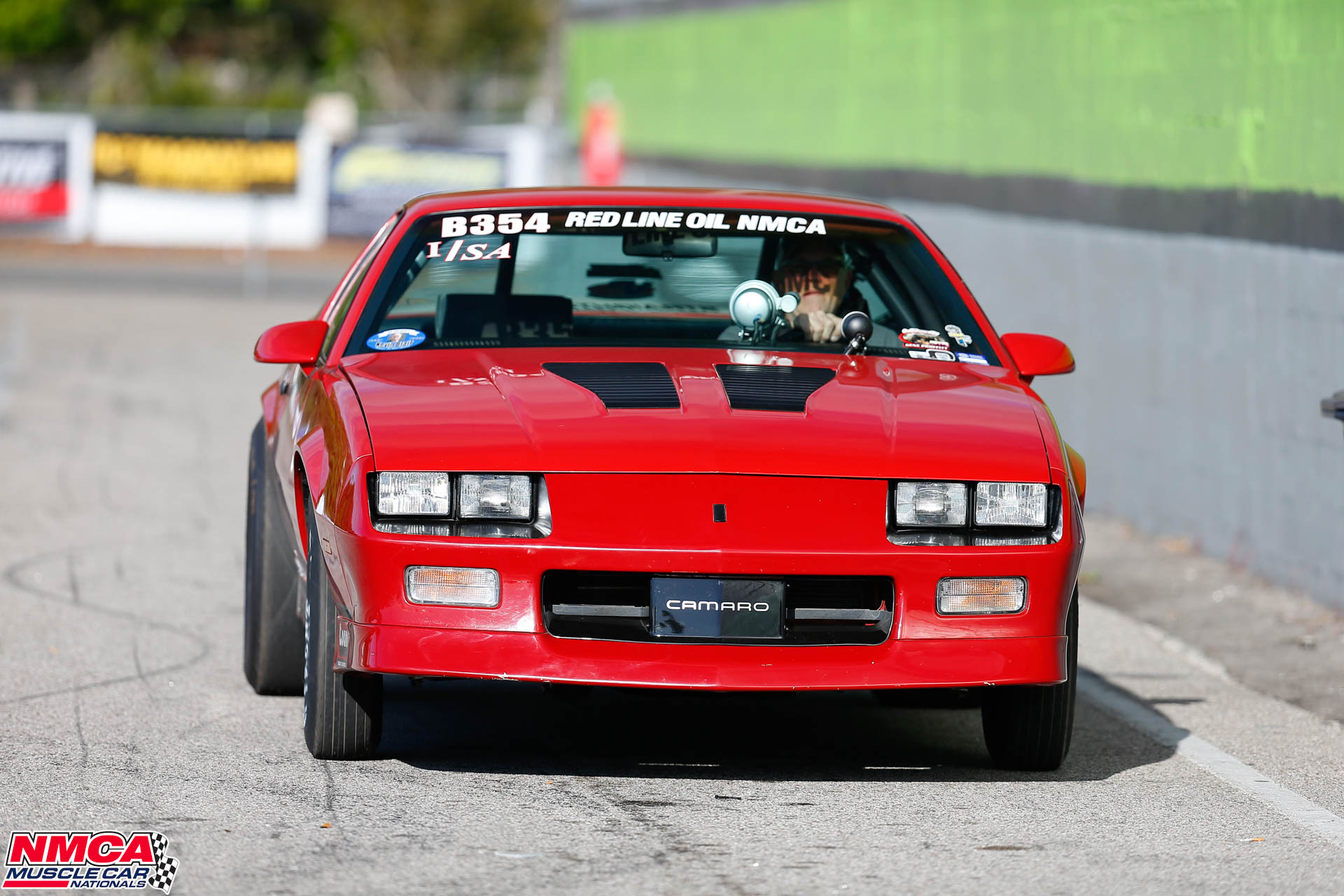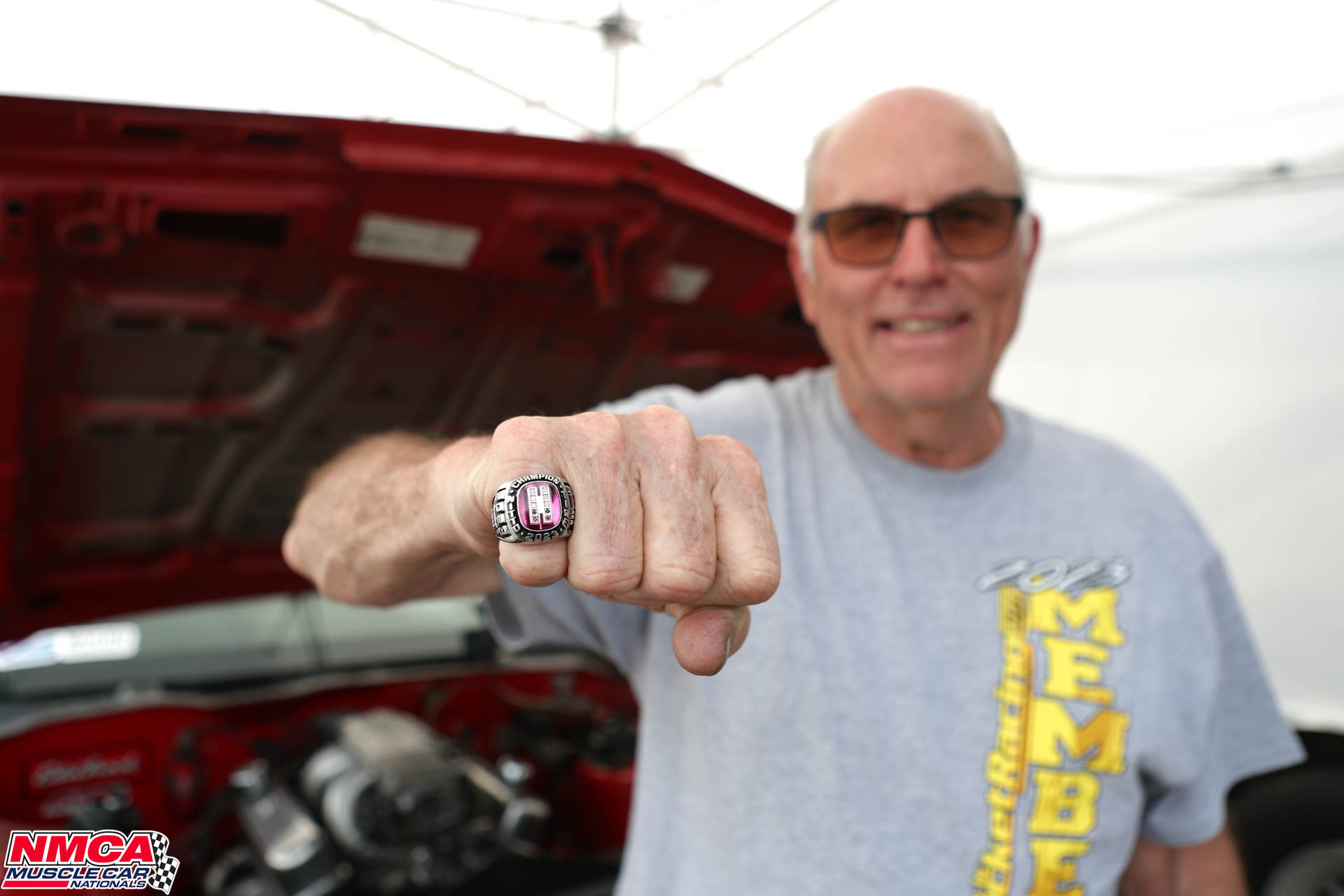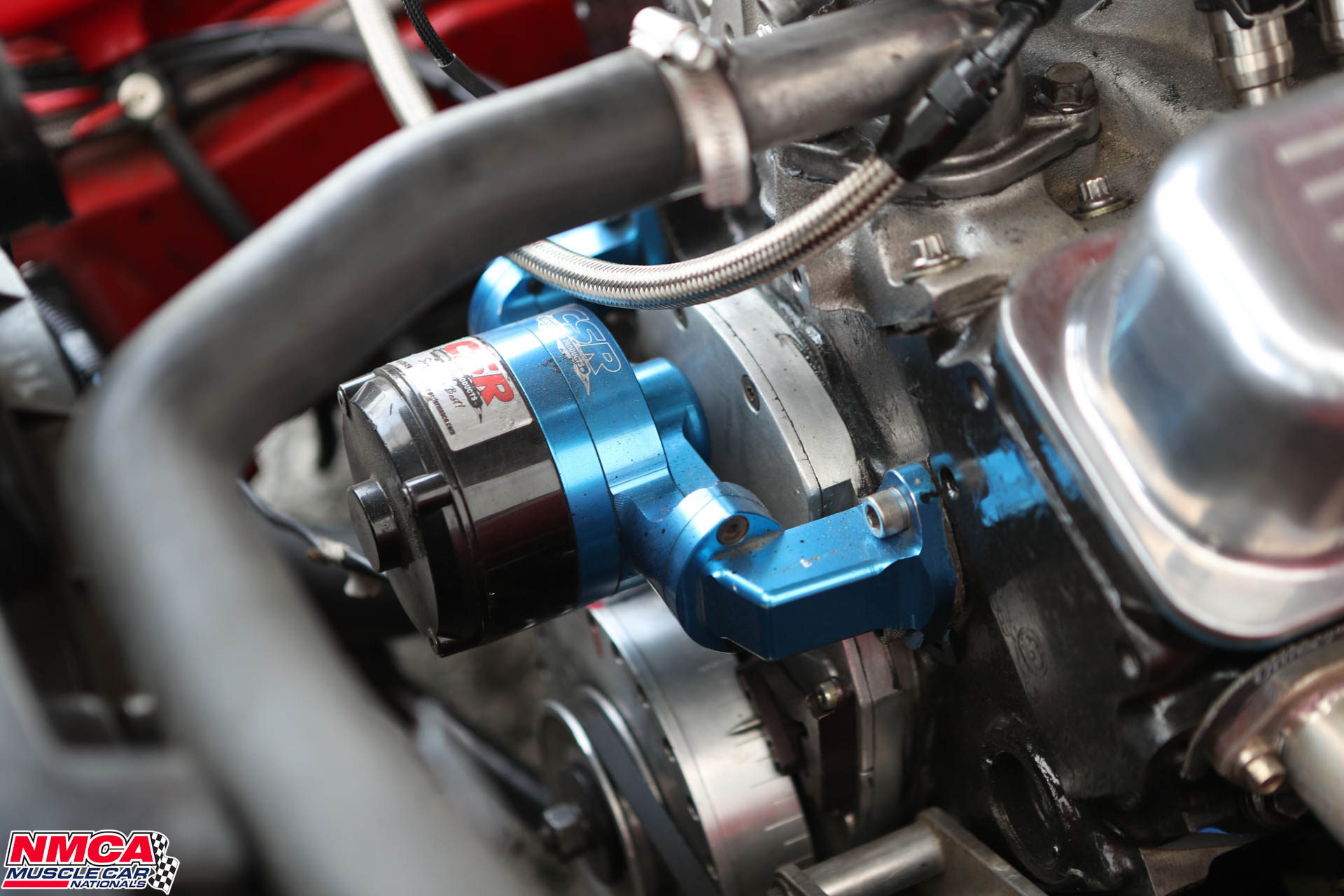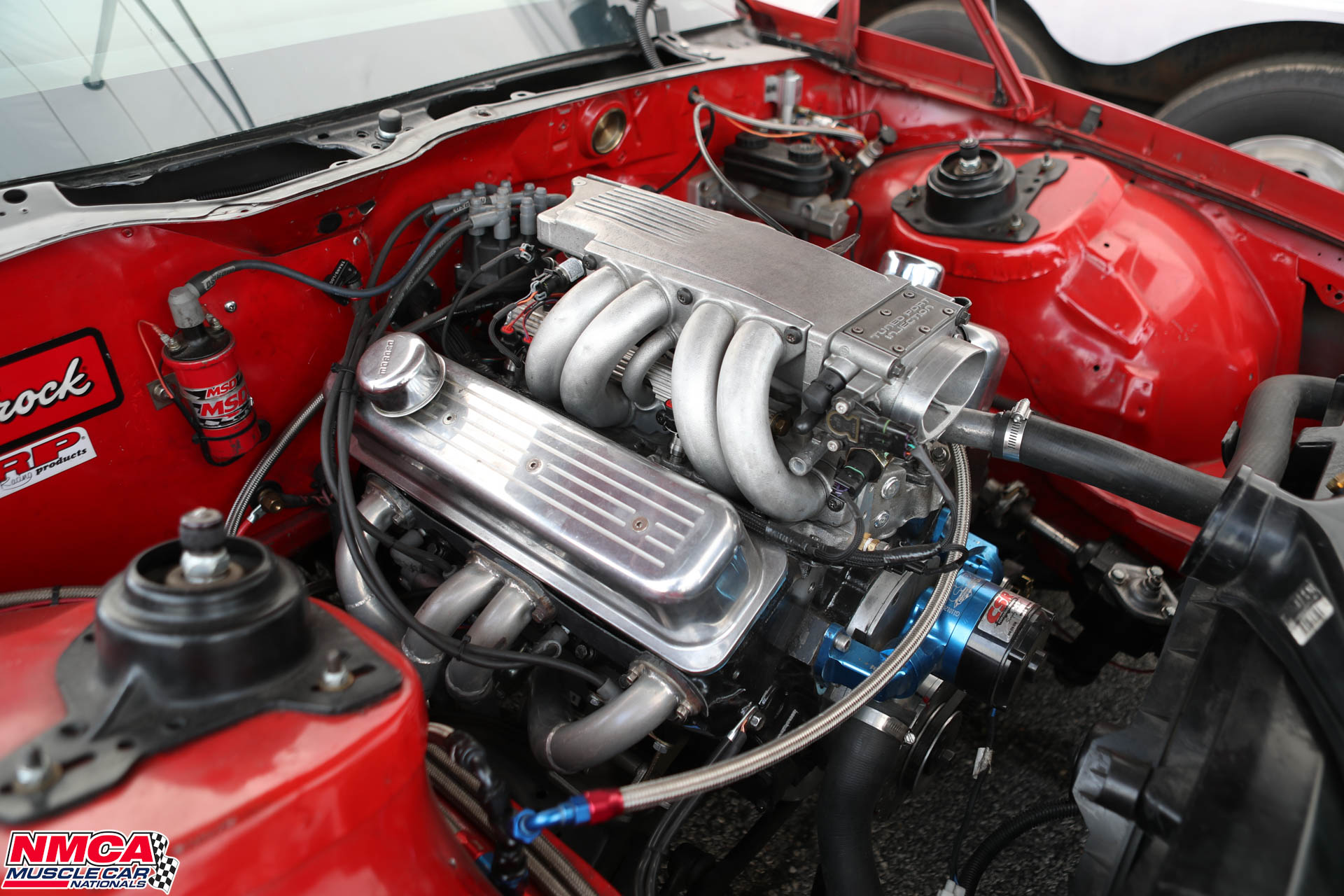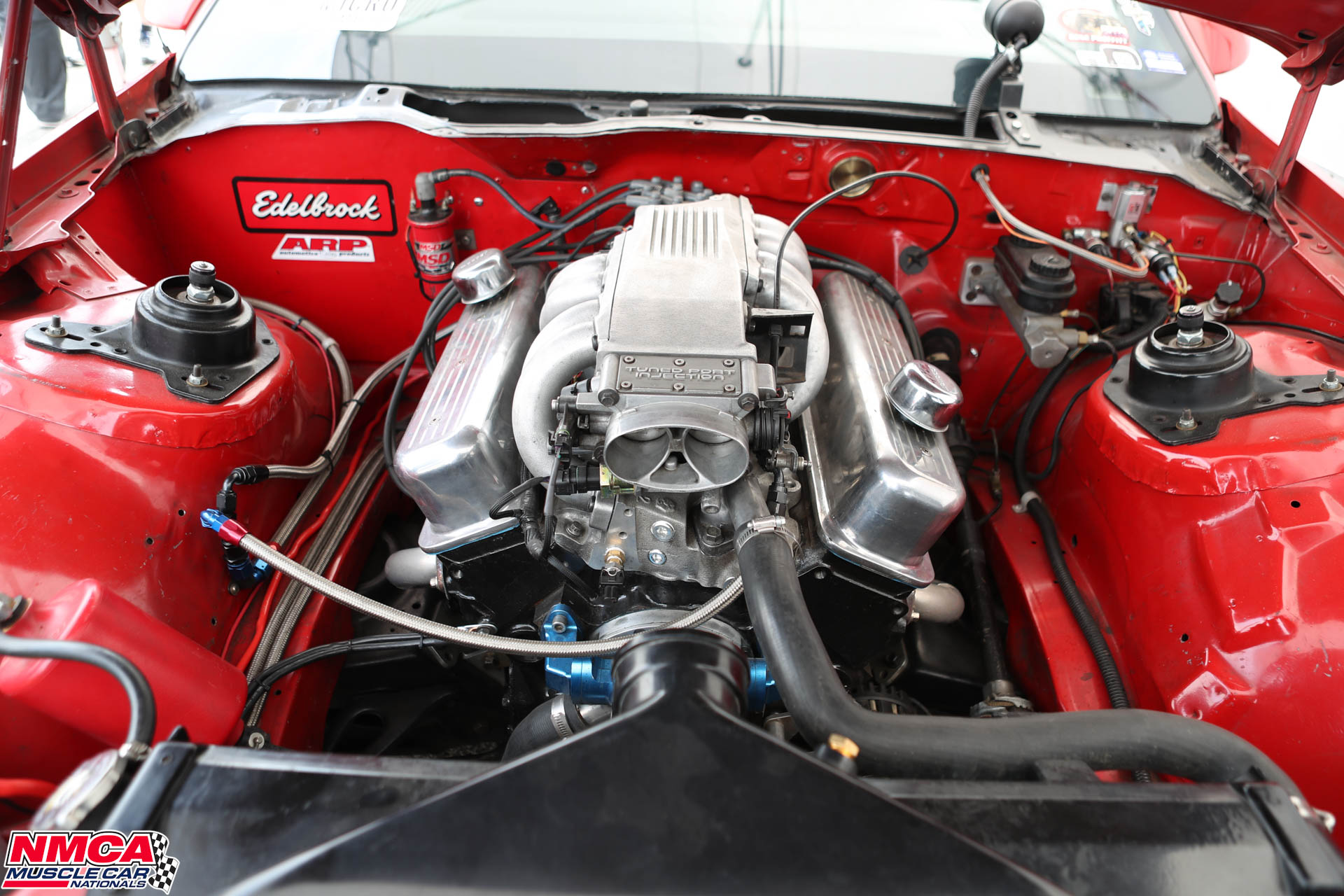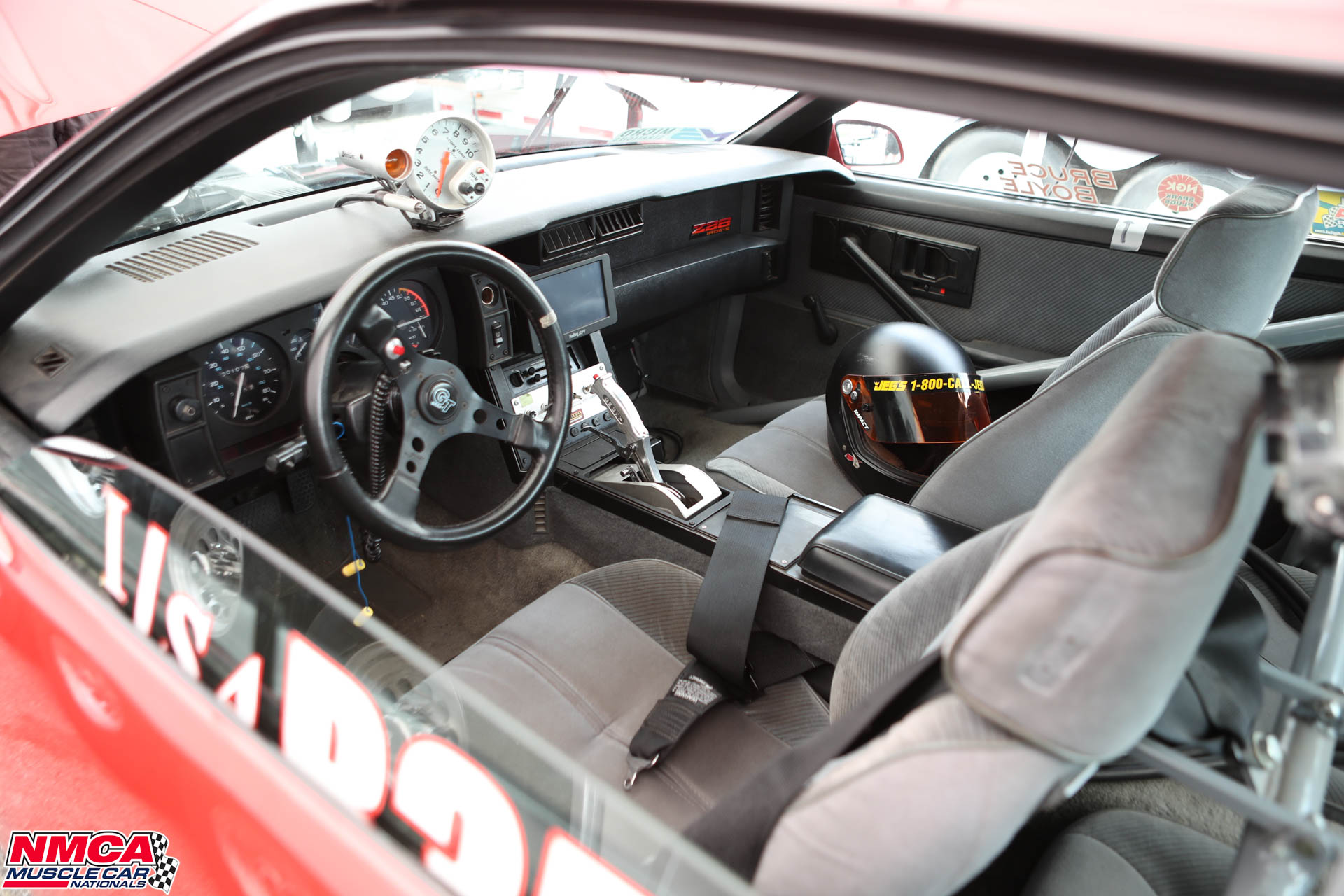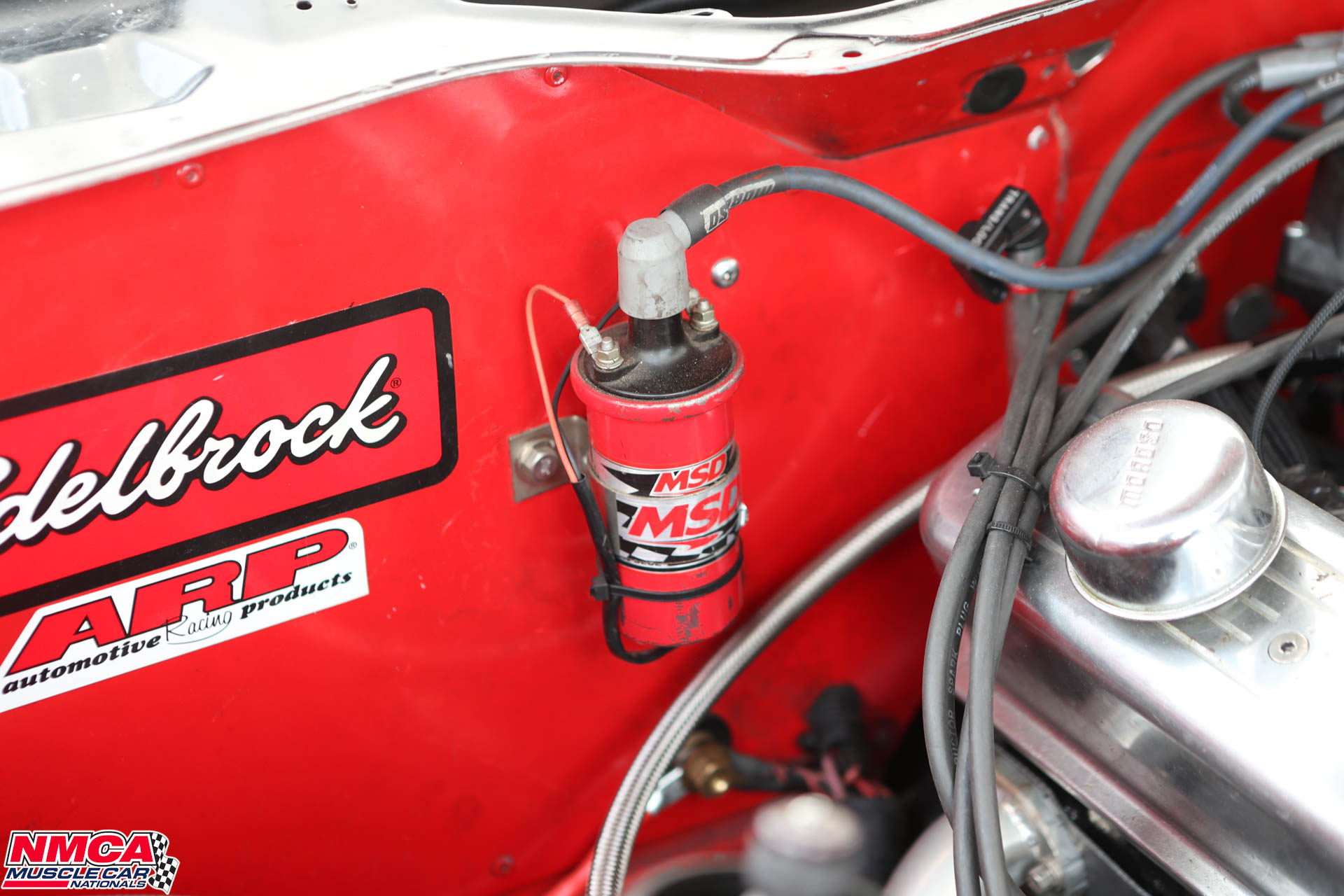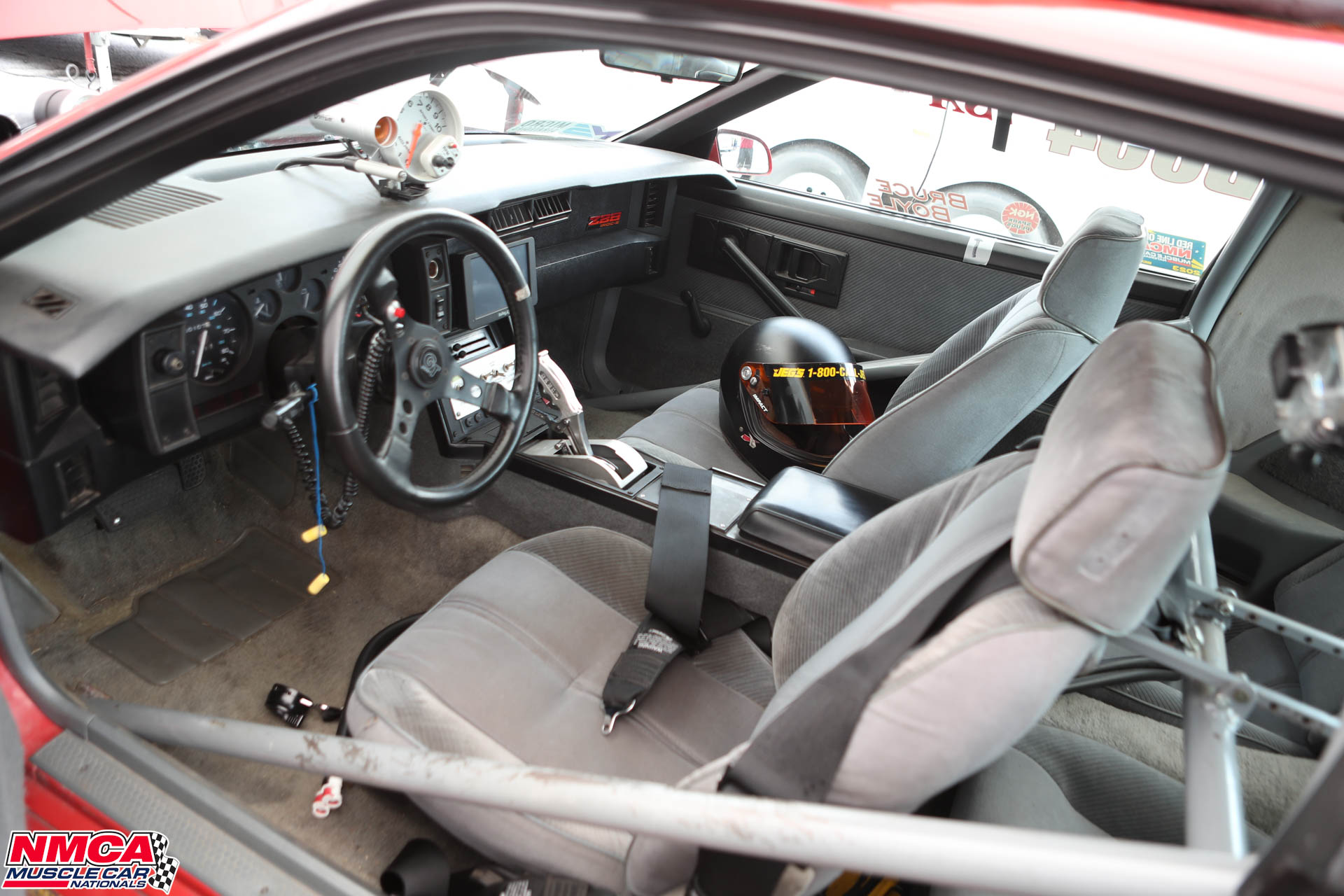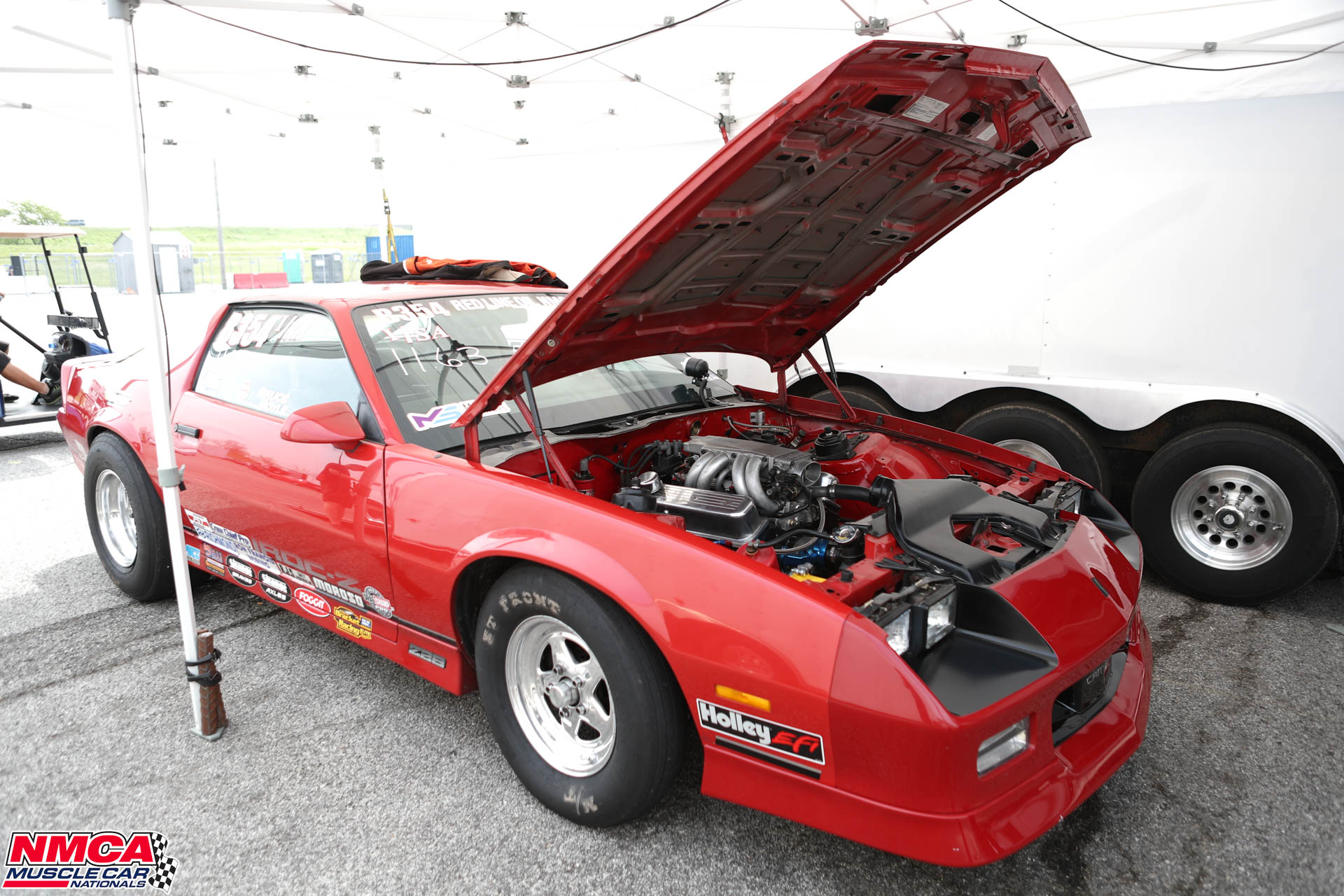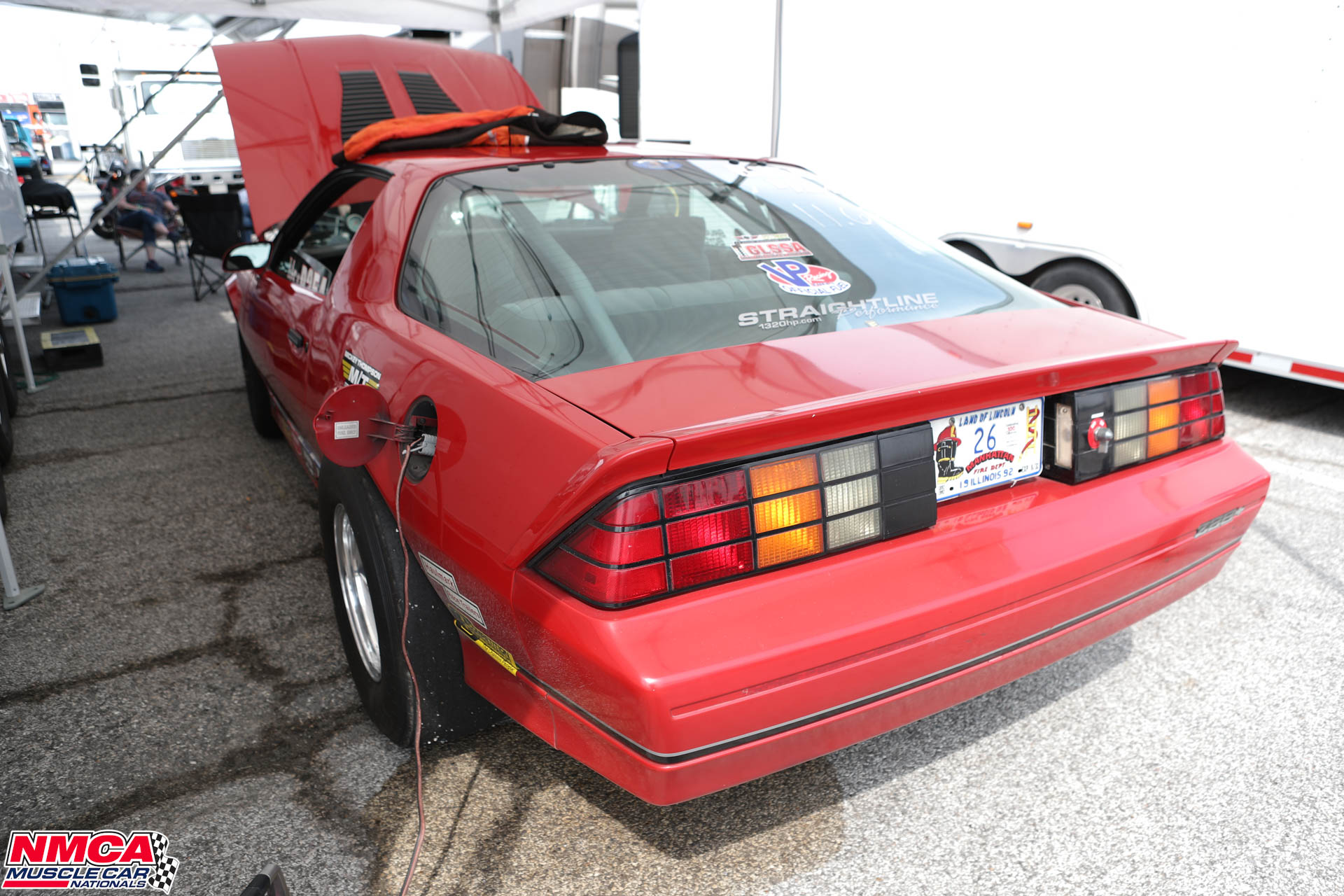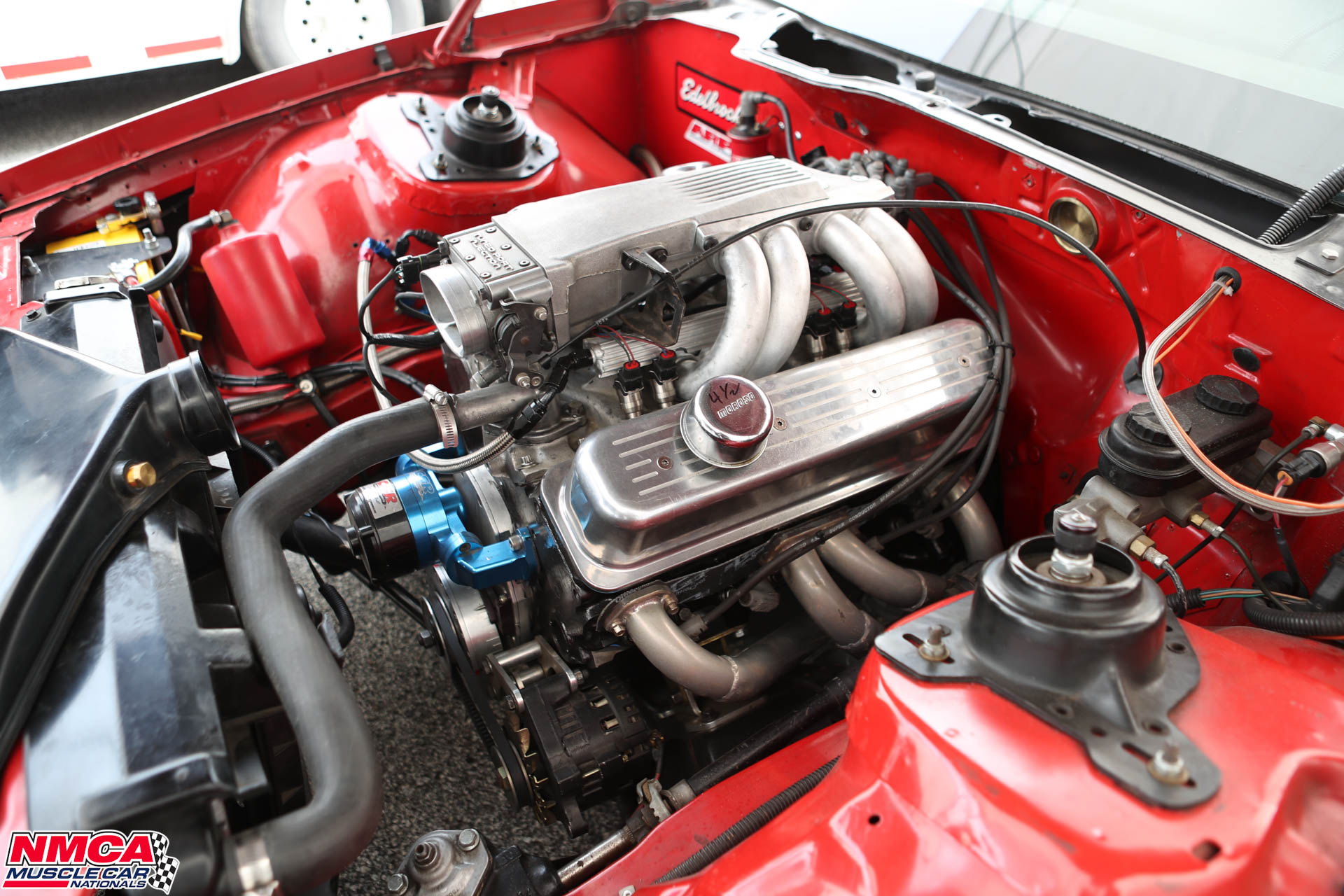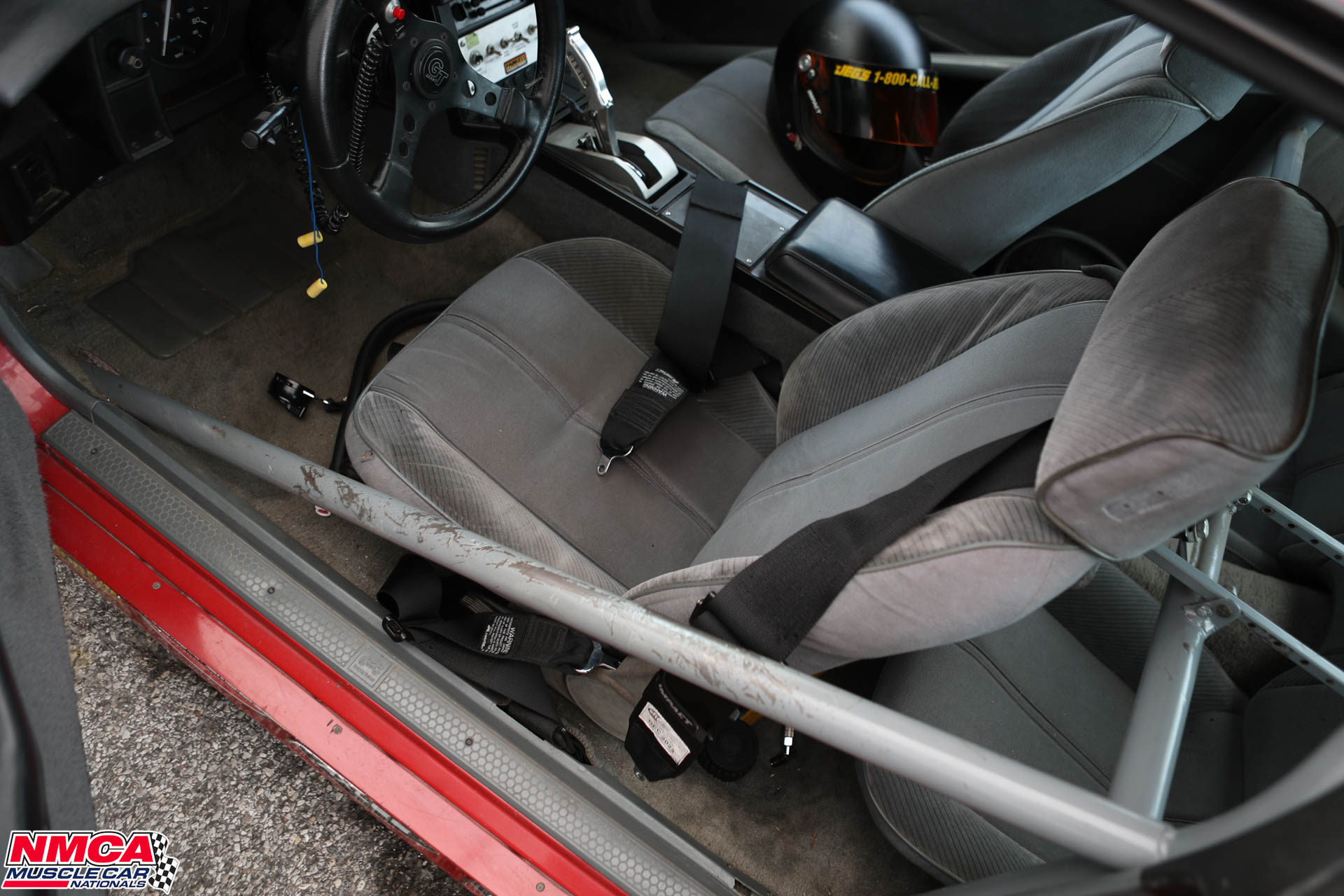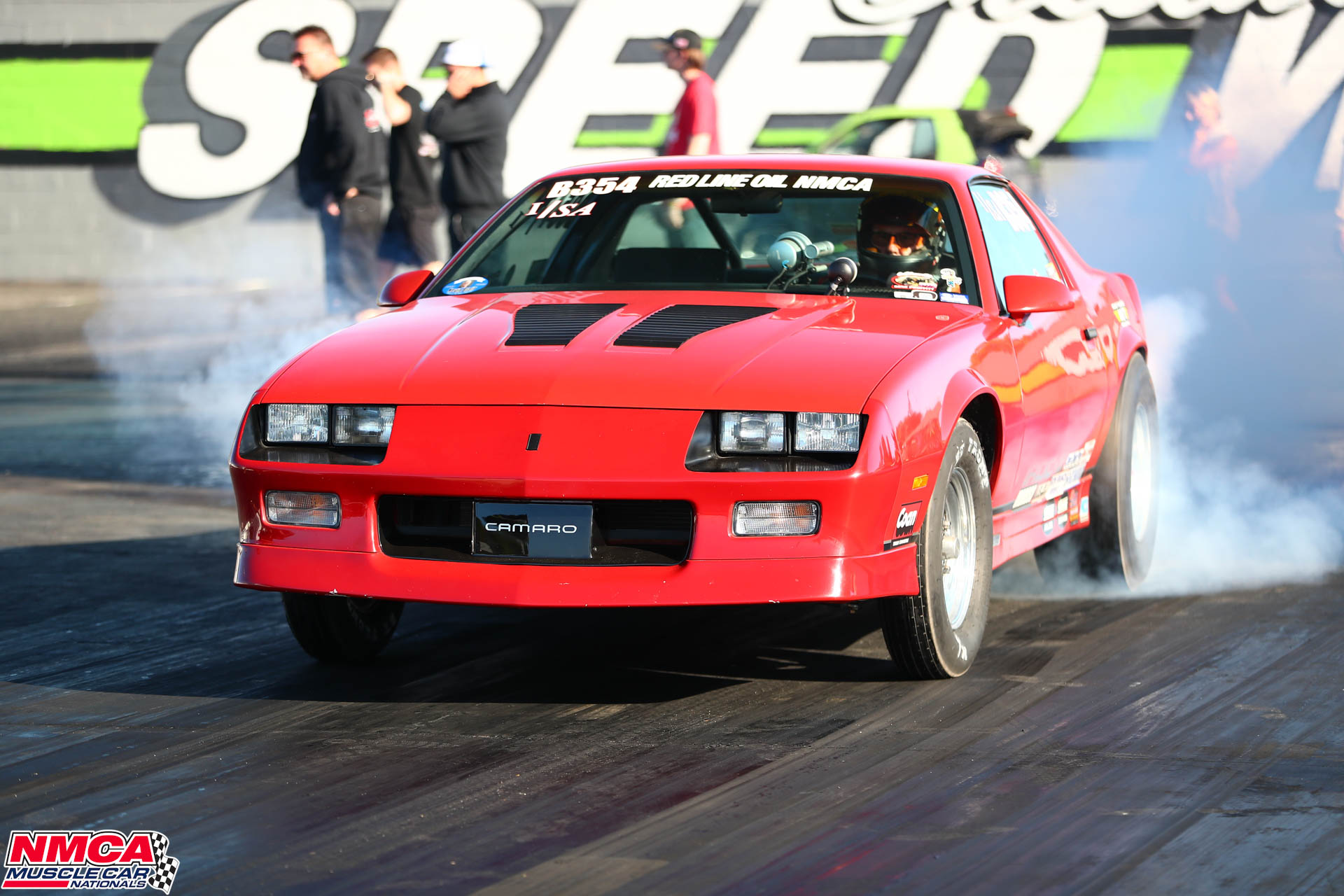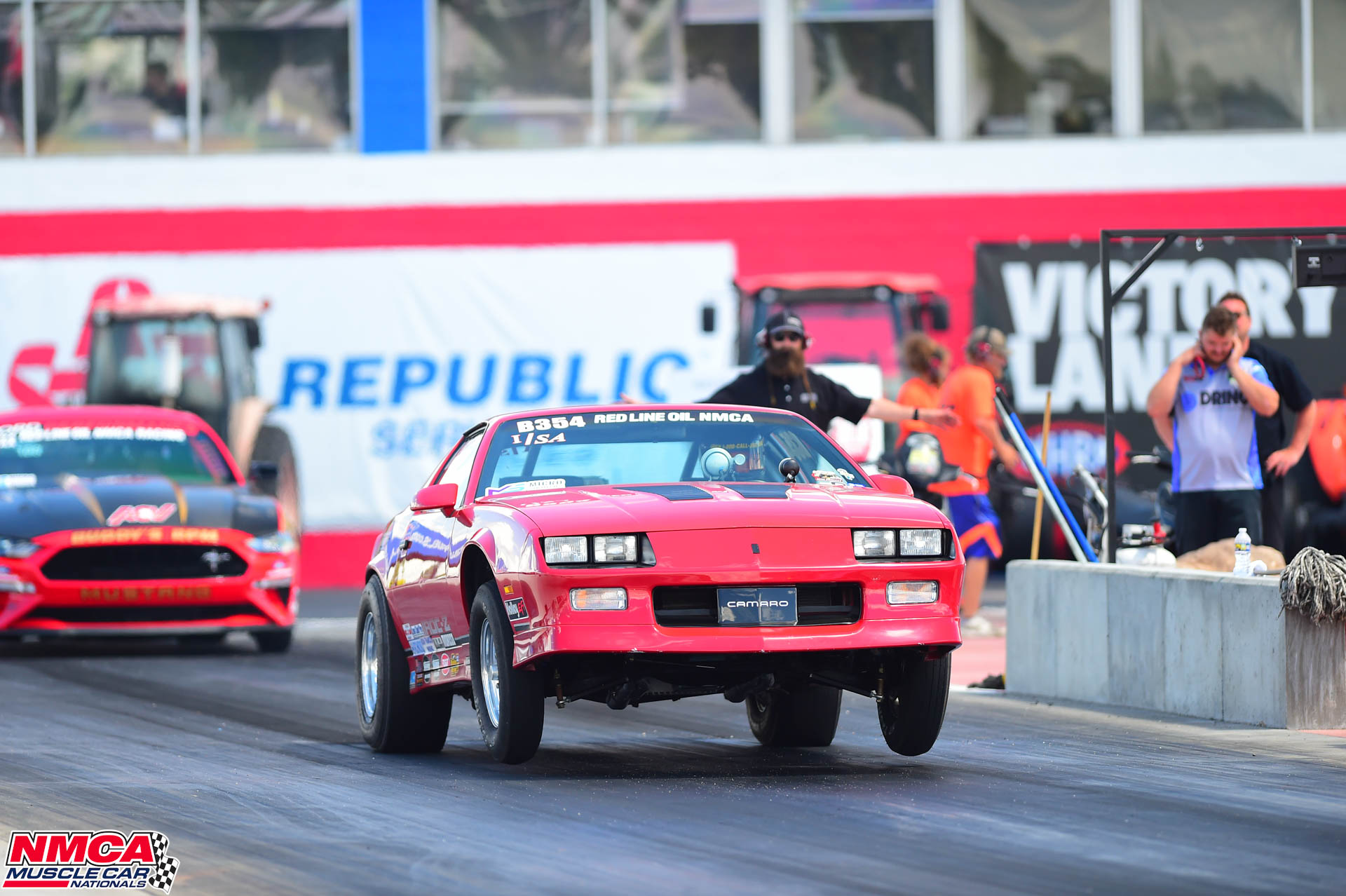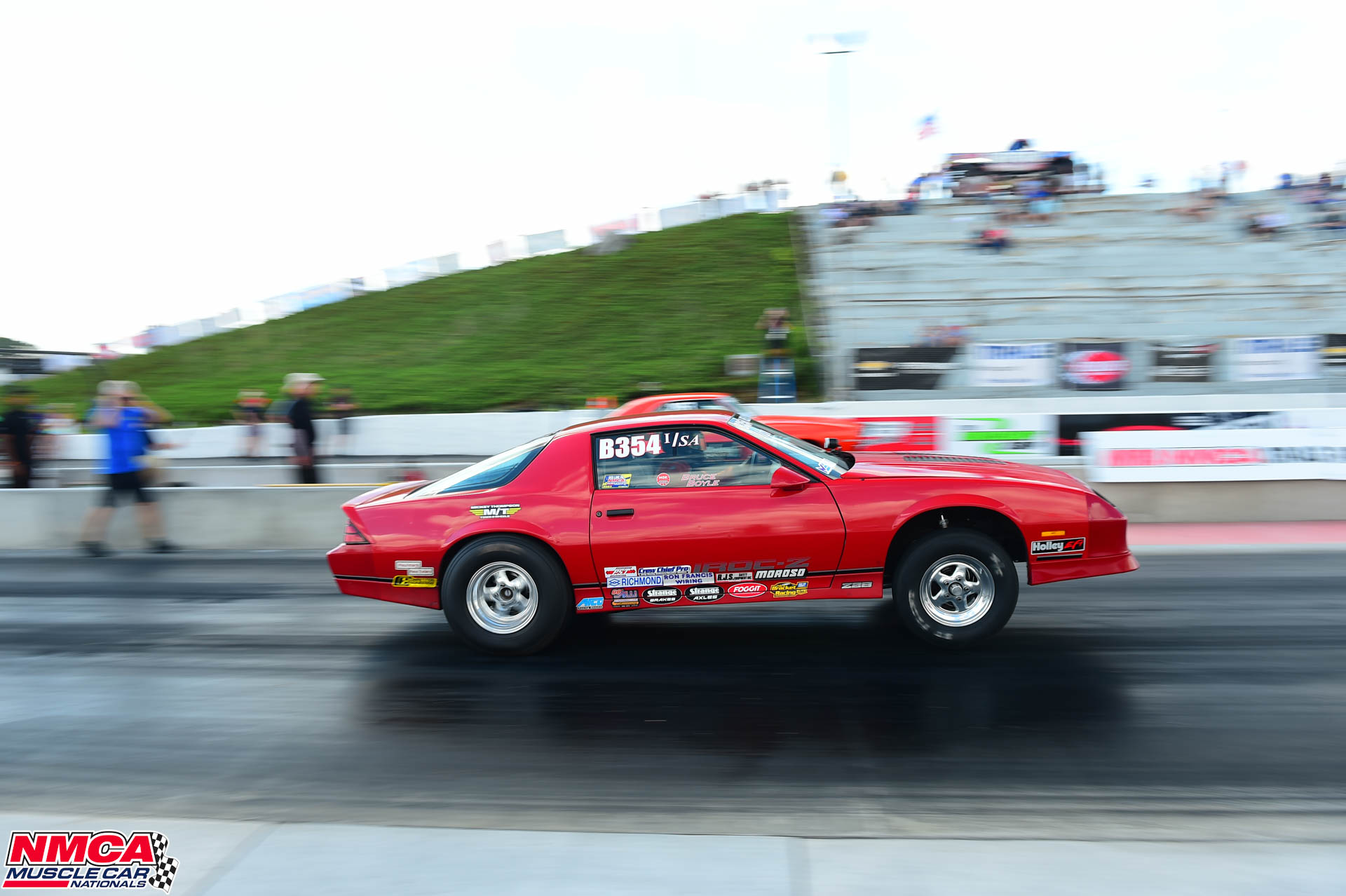Bruce Boyle is looking to Boil the Competition in NMCA Micro Strategies Stock Eliminator
By Evan J. Smith
NMCA, National Muscle Car Association, is home to everything American muscle and of the myriad of categories, Micro Strategies Stock Eliminator is one of the most time-honored. There have been variations to the class over the years as multiple sanctioning bodies offer (or have offered) Stock Eliminator including AHRA, NHRA, IHRA and NMCA to name a few.
Bruce Boyle of Manhattan, IL is one of thousands who prefer Stock class racing, which offers a mix of heads-up and bracket racing along with the challenge of improving a factory-based combination. He’s an NMCA regular, with two Open Comp championships, but recently he switched to this 1989 IROC Camaro Stocker. After three events in 2023 he leads the points chase over George Cox, Dave Swanson and a host of top-quality drivers. He even captured the coveted Nitto Diamond Christmas Tree ring at the Testo Shootout.
“I started racing in 1976 with a 1972 Vega,” said Bruce. “It was a 2x2 Box frame car with a ‘cage and it ran 10s with a small-block. My grandfather loved all types of racing, stock car racing, Indy Car racing and he took us to see Midget racing in Joliet regularly, that’s how I got into it.
“I raced with NMCA from 2008 until 2016 in Magnafuel Open Comp and won the championship in 2013 and 2014 with my 1976 small-block Monza. It is 2,275 lbs. and runs 8.80s. I drove the Monza for so long and I was looking for something different,” he added. “I bought the Camaro and I was thinking of switching it to run Nostalgia Muscle Car. I got the car out of Pennsylvania it was set up for IHRA G/Crate Motor. I got it complete and raced it for a year and a half. Finally, I parked the Monza.
“I used the crate engine but I had a few problems with the cam. I finally figured out it was a Target Master block that was the problem. The block was weak, so it would flex and it was taking out cam bearings. After a few failures, I bought a 300 hp crate engine from an IHRA racer and I ran that until this past year. But ultimately, I switched to a 350 TPI NHRA-legal engine built by Troy’s High Performance.” Bruce gets tuning help from Nick McGrath at Straight Line Performance, and he gets support from his wife Mary as well.
“I love the fuel injection because it really tests my brain. I run a Holley Dominator EFI,” said the retired Deputy Fire Chief. “And it’s run a best ET of 11.50 at 113.8 mph on the NMCA 12.30 index. I really enjoy the environment of NMCA. Steve Wolcott (NMCA/NMRA President) has created a very friendly and family oriented place to race,” Bruce added.
As stated, Bruce formerly ran his Chevy with a crate engine, which is allowed under IHRA and NMCA rules, but this season he’s switched to a conventional combination. The current powerplant is a 350-inch L-98 small-block with TPI (Tuned-Port Injection) that’s factory rated at 230 horsepower and 330 lb-ft of torque, however, it’s built to take advantage of the rules so it currently make about 400 horsepower and is NHRA/NMCA-rated to 268 HP.
The Camaro fits in I/SA (I/Stock Automatic) at 3,338 lbs. with driver on board. It’s backed by a GM Turbo 350 3-speed automatic transmission and uses an ATI torque converter that’s spec’d to the car. Stock rules mandate that the suspension can be upgraded with bolt-in parts (no relocating of links), so he’s taken advantage with race-specific springs, AFCO shock and there’s a big gear in the Strange Engineering 12-Bolt out back.
Part of the attraction of Stock Eliminator is the purity, meaning you must run many of the production engine parts that came with the car. Stock, unaltered parts include the carburetor/throttle body, cylinder heads (any springs are allowed), and there’s blueprinting specifications for bore and stroke. They are 0.080-inch over bore and +/- 0.015-inch stroke tolerance, but that’s it. Vehicles must have factory glass, body work and a full interior. Racers must stick with the stock valve sizes and cam lift, but duration is wide open. And you can run open headers and 9x30-inch slicks for traction.
Vehicles are classified by the “factored” horsepower (not the advertised hp) which is combined with the shipping weight to arrive at a specific class and from there the minimum weight is determined. Vehicle in Stock fall into the alphabet soup of categories from “FS/AA” to EF/S. As a side note: “NHRA/NMCA Factored horsepower” means NHRA or NMCA gives the car a rating that’s more in line with the performance of the average racer, rather than the factory horsepower that may not represent the true capabilities of the engine. And there is a system for this, it’s not an arbitrary figure.
Stock Eliminator dates back to the late 1960 and in the five-plus decades it’s been a showcase for cars that run with the factory-produced engine, or at least a facsimile of such. This includes the Big-Block Camaros, Mustangs and Mopars of the ‘60s, along with AMC, Buick, Olds and lots of other makes and models. The NHRA Classification Guide is the source for all the details on engine specifications and weights. Stock is open to 1955-present models so you see lots of combinations in competition. In addition to the heavy hitters are many small-block variants, plus smog-era cars of the 1970s, the “new-generation” EFI 1980s machines right up to the current crop of insane cars being built by Chevrolet, Dodge and Ford that run in Holley EFI Super Cars.
Bruce Boyle is one of many racing a Chevrolet Camaro in Micro Strategies Stock Eliminator, but he’s gunning for a third NMCA Championship and all the rest are trying to catch him.
By Evan J. Smith
NMCA, National Muscle Car Association, is home to everything American muscle and of the myriad of categories, Micro Strategies Stock Eliminator is one of the most time-honored. There have been variations to the class over the years as multiple sanctioning bodies offer (or have offered) Stock Eliminator including AHRA, NHRA, IHRA and NMCA to name a few.
Bruce Boyle of Manhattan, IL is one of thousands who prefer Stock class racing, which offers a mix of heads-up and bracket racing along with the challenge of improving a factory-based combination. He’s an NMCA regular, with two Open Comp championships, but recently he switched to this 1989 IROC Camaro Stocker. After three events in 2023 he leads the points chase over George Cox, Dave Swanson and a host of top-quality drivers. He even captured the coveted Nitto Diamond Christmas Tree ring at the Testo Shootout.
“I started racing in 1976 with a 1972 Vega,” said Bruce. “It was a 2x2 Box frame car with a ‘cage and it ran 10s with a small-block. My grandfather loved all types of racing, stock car racing, Indy Car racing and he took us to see Midget racing in Joliet regularly, that’s how I got into it.
“I raced with NMCA from 2008 until 2016 in Magnafuel Open Comp and won the championship in 2013 and 2014 with my 1976 small-block Monza. It is 2,275 lbs. and runs 8.80s. I drove the Monza for so long and I was looking for something different,” he added. “I bought the Camaro and I was thinking of switching it to run Nostalgia Muscle Car. I got the car out of Pennsylvania it was set up for IHRA G/Crate Motor. I got it complete and raced it for a year and a half. Finally, I parked the Monza.
“I used the crate engine but I had a few problems with the cam. I finally figured out it was a Target Master block that was the problem. The block was weak, so it would flex and it was taking out cam bearings. After a few failures, I bought a 300 hp crate engine from an IHRA racer and I ran that until this past year. But ultimately, I switched to a 350 TPI NHRA-legal engine built by Troy’s High Performance.” Bruce gets tuning help from Nick McGrath at Straight Line Performance, and he gets support from his wife Mary as well.
“I love the fuel injection because it really tests my brain. I run a Holley Dominator EFI,” said the retired Deputy Fire Chief. “And it’s run a best ET of 11.50 at 113.8 mph on the NMCA 12.30 index. I really enjoy the environment of NMCA. Steve Wolcott (NMCA/NMRA President) has created a very friendly and family oriented place to race,” Bruce added.
As stated, Bruce formerly ran his Chevy with a crate engine, which is allowed under IHRA and NMCA rules, but this season he’s switched to a conventional combination. The current powerplant is a 350-inch L-98 small-block with TPI (Tuned-Port Injection) that’s factory rated at 230 horsepower and 330 lb-ft of torque, however, it’s built to take advantage of the rules so it currently make about 400 horsepower and is NHRA/NMCA-rated to 268 HP.
The Camaro fits in I/SA (I/Stock Automatic) at 3,338 lbs. with driver on board. It’s backed by a GM Turbo 350 3-speed automatic transmission and uses an ATI torque converter that’s spec’d to the car. Stock rules mandate that the suspension can be upgraded with bolt-in parts (no relocating of links), so he’s taken advantage with race-specific springs, AFCO shock and there’s a big gear in the Strange Engineering 12-Bolt out back.
Part of the attraction of Stock Eliminator is the purity, meaning you must run many of the production engine parts that came with the car. Stock, unaltered parts include the carburetor/throttle body, cylinder heads (any springs are allowed), and there’s blueprinting specifications for bore and stroke. They are 0.080-inch over bore and +/- 0.015-inch stroke tolerance, but that’s it. Vehicles must have factory glass, body work and a full interior. Racers must stick with the stock valve sizes and cam lift, but duration is wide open. And you can run open headers and 9x30-inch slicks for traction.
Vehicles are classified by the “factored” horsepower (not the advertised hp) which is combined with the shipping weight to arrive at a specific class and from there the minimum weight is determined. Vehicle in Stock fall into the alphabet soup of categories from “FS/AA” to EF/S. As a side note: “NHRA/NMCA Factored horsepower” means NHRA or NMCA gives the car a rating that’s more in line with the performance of the average racer, rather than the factory horsepower that may not represent the true capabilities of the engine. And there is a system for this, it’s not an arbitrary figure.
Stock Eliminator dates back to the late 1960 and in the five-plus decades it’s been a showcase for cars that run with the factory-produced engine, or at least a facsimile of such. This includes the Big-Block Camaros, Mustangs and Mopars of the ‘60s, along with AMC, Buick, Olds and lots of other makes and models. The NHRA Classification Guide is the source for all the details on engine specifications and weights. Stock is open to 1955-present models so you see lots of combinations in competition. In addition to the heavy hitters are many small-block variants, plus smog-era cars of the 1970s, the “new-generation” EFI 1980s machines right up to the current crop of insane cars being built by Chevrolet, Dodge and Ford that run in Holley EFI Super Cars.
Bruce Boyle is one of many racing a Chevrolet Camaro in Micro Strategies Stock Eliminator, but he’s gunning for a third NMCA Championship and all the rest are trying to catch him.



